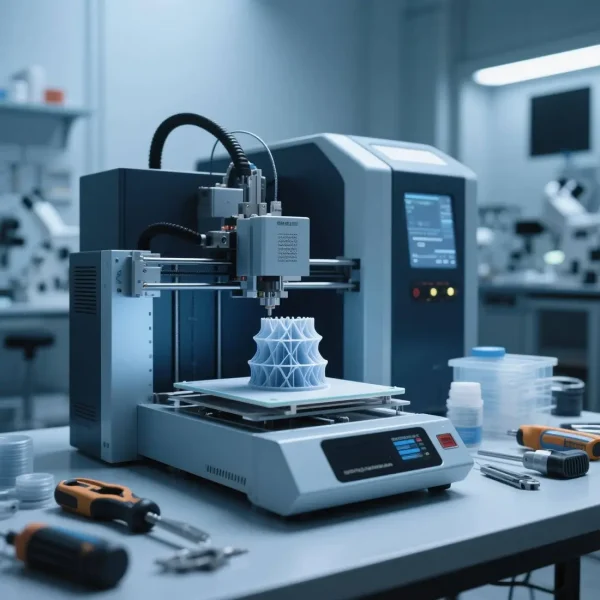
3D Printing
3D printing is a process that creates parts or models by sequentially layering adhesive materials based on predefined 3D blueprints (CAD format).
Material Types and Applications
1. Thermoplastics: PLA (polylactic acid), ABS (acrylonitrile butadiene styrene), nylon (PA12), PETG
Application:
Consumer Grade: Toys, decorative items, educational tools, gifts, and accessories (PLA is eco-friendly and biodegradable, suitable for desktop FDM printers);
Industrial Grade: Automotive interior components, equipment housings (ABS offers high impact resistance; nylon provides high temperature resistance and strength);
Medical: Surgical guides, orthopedic devices (PETG exhibits excellent biocompatibility).
2. Photopolymer Resins: Standard Resin, Flexible Resin, High-Temperature Resin, Dental Resin
Applications:
Jewelry: High-precision wax casting (standard resin achieves surface roughness Ra0.8μm);
Aerospace: Lightweight turbine blades (high-temperature resin withstands 200°C operating conditions);
Dental: Clear aligners, implant guides (dental resin certified ISO 10993 for biocompatibility).
3. Metal Materials: Titanium alloy (Ti6Al4V), aluminum alloy (AlSi10Mg), stainless steel (316L), cobalt-chromium alloy
Applications:
Aerospace: Engine nozzles (titanium alloys offer high strength and corrosion resistance);
Orthopedic implants: Bionic joint bones (cobalt-chromium alloys exhibit excellent biocompatibility);
Mold manufacturing: Injection molds with cooling channels (aluminum alloys achieve thermal conductivity up to 180 W/m·K).
4. Composite Materials: Carbon Fiber Reinforced Plastic (CFRP), Glass Fiber Reinforced Nylon (GF-PA6)
Application Scenarios:
Sports Equipment: Bicycle frames, automotive bumper side skirts, etc. (CFRP strength is 5 times that of steel);
Drone Structural Components: Lightweight arms (GF-PA6 density is only 1.4 g/cm³).
